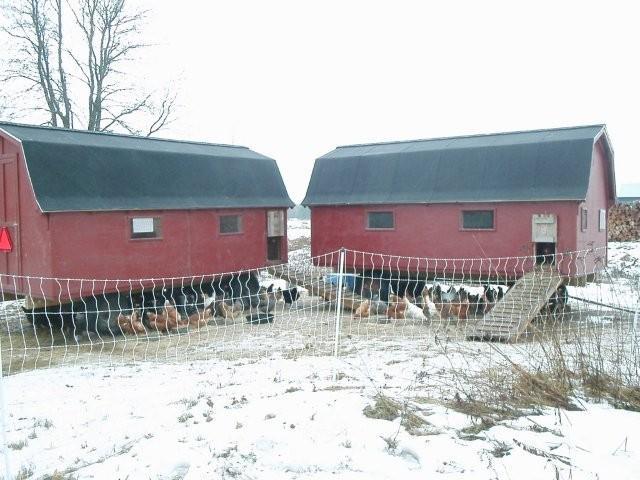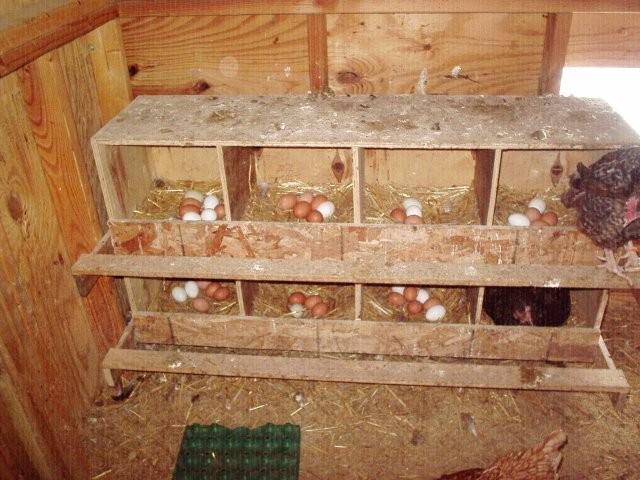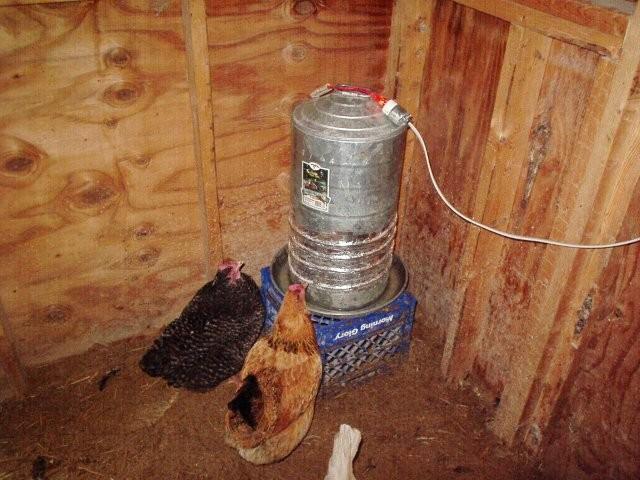I don't know of any easy way to answer your question, it depends on so many different things. Your chickens' breed, size, age, and individual personality enters in, your climate and access, your goals, and how you manage them are all factors. In some circumstances, you can squeeze them in tight and do Ok. Sometimes you need a lot more room. My approach is to decide how many I want and make sure they have plenty of room. I also like extra room for flexibility.
I wrote something about space a while back that might help you decide what should work for your circumstances. Good luck!!!
As long as you have enough height for the roosts to be noticeably higher than the nest boxes, height does not matter to chickens. They are basically ground dwelling birds, so the ground area is all that really matters space wise. I said it does not matter to the chickens. It does matter to me if I have to work in there. It matters quite a bit.
If the nest boxes are high enough off the ground that the chickens can easily get under them, then nest boxes do not take away from the space available. The tops of the nesting boxes does not add to the living space either although they may occasionally be up there. Ground level is what counts.
Some of the things that make up the space requirement are, in my opinion:
1. Personal space for the birds. They have different personalities and different individual requirements. Some are very possessive of personal space and some can share.
2. Access to feeder and waterer. The general recommendation is that they all be able to eat at one time, but access to the waterer is also important. Part of this is that they seem to like to all eat at once but not necessarily drink at the same time. Part of it is that a dominant bird may keep others from eating or drinking, especially with limited access.
3. Being able to put the feeder and waterer where they will not poop in it when they roost.
4. Roost space. They not only need to have enough room to roost, they need to have enough room for them to sort out who gets to sleep next to whom and who gets the prime spots. They also need enough room to get on the roosts and get off them. When they get on, they may jump from some midway support or fly directly to the roost, but either way, they like to spread their wings. And some chickens seem to enjoy blocking the entry points if there are limits. And when they get off, mine tend to want to fly down, not jump to a halfway point. They need room to fly down without bumping into feeders, waterers, nesting boxes, or a wall.
5. Poop load. The larger area they have the less often you have to actively manage the poop. They poop a lot while on the roost so you may have to give that area special consideration, but mucking out the entire coop can be backbreaking work plus you have to have some place to put all that bedding and poop. In my opinion, totally cleaning out the coop is something that needs to happen as seldom as possible.
6. How often are they able to get out of the coop. The more they are confined to the coop, the larger the personal space needs to be. The normal recommendation on this forum is 4 square feet per full sized chicken with a minimum of 10 square feet of run per bird. This additional requirement outside is sometimes not mentioned. How often they are allowed out of the coop may depend on a lot more than just weather. Your work schedule, when you are able to turn them loose, what time of day you open the pop door to let them out or lock them up at night, all this and more enters into the equation. The 4 square feet recommendation assumes they will spend extended time in the coop and not be able to get in the run. What that extended time can safely be depends on a lot of different factor so there is no one correct length of time for everyone.
7. Do you feed and water in the coop or outside. The more they are outside, the less pressure on the size of the coop.
8. The size of the chicken. Bantams require less room than full sized chickens. This has to be tempered by breed and the individual personalities. Some bantams can be more protective of personal space than others, but this is also true of full sized breeds.
9. The breed of the chicken. Some handle confinement better than others.
10. The number of chickens. The greater the number of chickens, the more personal space they can have if the square foot per chicken stays constant. Let me explain. Assume each chicken occupies 1 square foot of space. If you have two chickens and 4 square feet per chicken, the two chickens occupy 2 square feet, which leaves 6 square feet for them to explore. If you have ten chickens with 4 square feet per chicken, each chicken has 30 unoccupied square feet to explore. A greater number also can give more space to position the feeders and waterers properly in relation to the roosts and provide access. Im not encouraging you to crowd your birds if you have a large number of them. Im trying to say you are more likely to get in trouble with 4 square feet per chicken if you have very few chickens.
11. What is your flock make-up. A flock with more than one rooster may be more peaceful if it has more space. I don't want to start the argument about number or roosters here as I know more than one rooster can often peacefully coexist with a flock, but I firmly believe more space helps.
12. What is the maximum number of chickens you will have. Consider hatching chicks or bringing in replacements. Look down the road a bit.
13. Do you want a broody to raise chicks with the flock? A broody needs sufficient room to work with or you risk problems from other chickens.
14. The more space you have, the easier it is to integrate chickens.
I'm sure I am missing several components, but the point I'm trying to make is that we all have different conditions. There is no magic number that suits us all. The 4 square feet in a coop with 10 square feet in the run is a good rule of thumb for a minimum that most of the time will keep us out of trouble, but not always. I do believe that more is better both in the coop and in the run.











